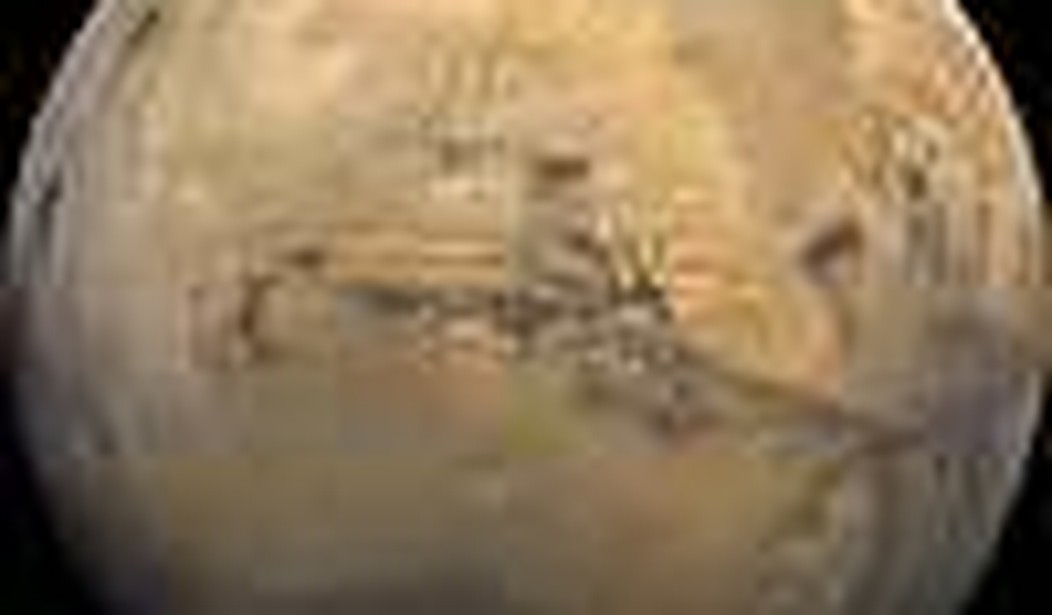If you want to start an argument among a group of space scientists, one of the easiest ways is to ask whether the evidence suggests that there is life on Mars. I know, because I’ve asked that question, off and on, since the Viking landers reached Mars in July of 1976.
The question became interesting again last week, when Michael Mumma and others at NASA published a paper in Science. In the paper, they described their observations of methane in Mars’ atmosphere. The formal announcement at the NASA website for Mars exploration is titled “Martian Methane Reveals Red Planet is not a Dead Planet.” It was reported in the press as if life had definitely been found. Look closely at the announcement, though, and you find it really says that the results show either that there is life on Mars or Mars is geologically active.
Methane, composed of four hydrogen atoms attached to one carbon, CH4, is the simplest possible hydrocarbon; when we use it at home, it’s called “natural gas.” As millions of teenagers have demonstrated, it’s the flammable component of the gases produced by digestion.
These new results are certainly suggestive and interesting. To understand them, we ought to think about the conditions on Mars a bit.
At one time, it was almost commonplace belief that there was at least some life on Mars, based on its similarity to Earth and on seasonal changes that could be observed through telescopes. But as our observations got better, that all changed.
Mars had less atmosphere, and was a lot less similar to Earth, than we had thought. In fact, the pressure on Mars is quite a bit less than the pressure in a vacuum-packed can of coffee. There is no open water, there are no canals.
There is ultraviolet radiation that would kill Earthly life in minutes and no water on the surface at all. In fact, the soil on the surface of Mars is saturated with oxidizers. It’s as if you soaked the surface with hydrogen peroxide from the drug store.
Opinion quickly changed, and the results from the Viking landers made it seem even less likely there was life, although there have always been a few planetary scientists who dissented.
Planetary science has moved on pretty dramatically since Viking, though. It’s been known for years that there was some methane in Mars’ atmosphere; it’s been rumored for months that NASA was preparing to announce the discovery of life. But there were some things that, at the very least, made NASA more cautious. Some of them were technical: the observations are all by Earth-based telescopes, and there is also methane in Earth’s atmosphere. How could they be sure the methane was actually on Mars? Furthermore, we know there are geological sources for methane (natural gas, remember?) as well as biological.
There were also other issues.
Many readers will remember when Dr. Chris McKay and NASA announced evidence for life on Mars during the Clinton administration. The announcement was based on tiny structures McKay thought were fossil microbes, which are found in Antarctic meteorites believed to have been chipped off Mars by ancient asteroid impacts. The problem was that over time these results were questioned; they now are generally doubted, and some scientists even think the announcement was a little scandalous. NASA didn’t want a repeat of that controversy.
The net result is that there are two camps among the scientific community: doubters and believers. The doubters feel scientists like McKay are too anxious to announce that life has been found, while the believers feel the doubters would only accept the presence of life if it walked up and kicked a lander.
So now we come to the new results. What Mumma and NASA published is that they are, first of all, convinced that they really are observing methane on Mars, and not just in the Earth’s atmosphere as light passes between Earth and Mars.
Second, they observed variations in the methane concentration over the surface of Mars. The same ultraviolet radiation that would sterilize the surface will break down methane, and Mars’ winds would mix the atmosphere thoroughly in a short time. The two taken together mean there must be active sources of methane, pouring millions of tons of methane into the atmosphere over time. But methane can be released by volcanoes and volcanic fissures. While there are no active volcanoes known today on Mars, we know Mars has had volcanoes. In fact, Olympus Mons is the biggest volcano in the whole Solar System.
Their other observation, though, puts us back to what we thought we knew about Mars in 1950: the methane release appears to change with the Martian seasons. That’s a lot harder to explain with geology.
The outcome is that the doubters continue to doubt, while the believers think they have even more evidence to support their beliefs. The next Mars lander mission plan has been put off until 2011, and can’t be hurried. What’s more, one of the active areas on Mars had been considered as a landing site and rejected because it appears to be too rough for a safe landing. So the question won’t be settled for a long time. It may not be settled until humans finally arrive on Mars and can make experiments, consider results, and perform new experiments with less than a ten-year lag.
Is there life on Mars? We can answer that question with a conclusive “maybe.” But we can be sure that Mars, and the universe in general, will continue to surprise us and our descendants for a long time to come.










Join the conversation as a VIP Member